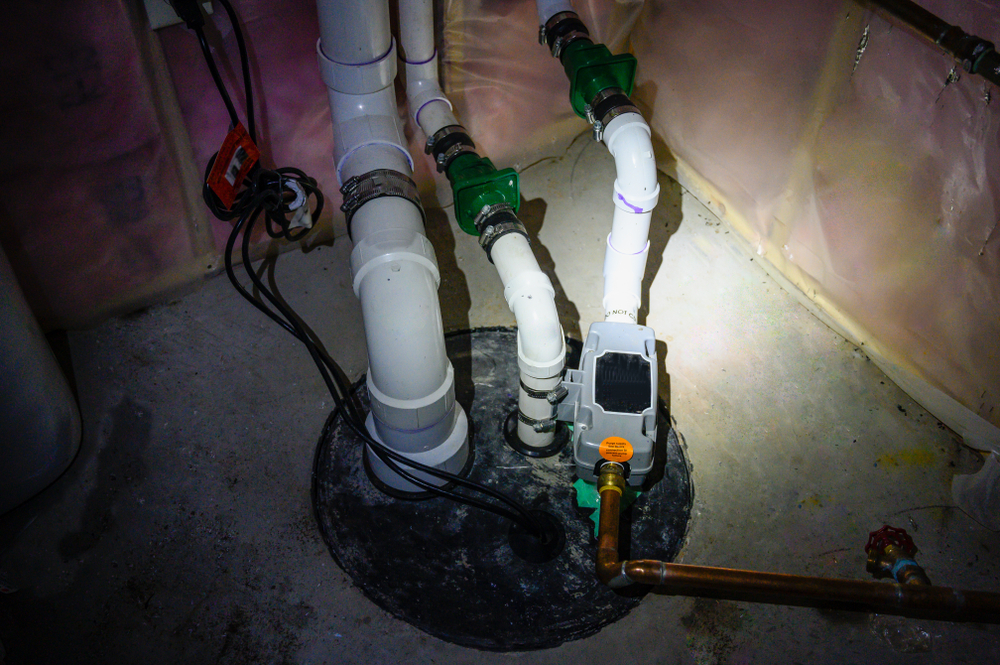Ever walked into your home and been hit with a musty smell that just won’t go away? Maybe you’ve noticed the floors starting to sag or discovered mold growing in unexpected corners. These seemingly minor issues can actually be warning signs of larger, often overlooked, crawl space drainage problems.
Water that makes its way underneath a home isn’t just a small nuisance. It can lead to major structural issues if not addressed promptly. Think of the crawl space as the silent support system of your house; when it’s compromised, the whole structure is at risk due to crawl space drainage problems.
The Impact of Poor Crawl Space Drainage
Water pooling under a house does more than just create a damp environment. It can lead to serious issues over time. Many homeowners are unknowingly dealing with the consequences of poor drainage right now.
When the surrounding soil becomes saturated, it exerts pressure against the foundation walls. This added stress can lead to cracks and instability in your foundation. These drainage issues put your homes support system at risk.
How Water Gets into Your Crawl Space
Crawl spaces are below-grade spaces, and often a forgotten part of your property. Understanding why water collects in a crawl space involves identifying its source. This is the first step in addressing the issue.
Water leaks could stem from several common sources. Sometimes, multiple factors contribute to the problem simultaneously. Identifying all sources helps develop a lasting strategy.
Here are some main ways water won’t properly drain:
- Plumbing Leaks: Sometimes, the issue is a plumbing leak. Even small water leaks from plumbing under a house contribute to crawl space water problems.
- Heavy Rain: Space water after heavy rain often indicates poor soil drainage around the foundation. Water flows towards the house instead of away.
- High Humidity: In humid environments, condensation forms on cooler surfaces like ducts and pipes. This condensation then drips onto the space floor, creating space humidity.
- Overflowing Gutters: Overflowing gutters cause rainwater to pool near the foundation. This surface water then seeps into the crawl space, creating a damp crawl space.
Structural Risks from Water Damage
The drainage problems from crawl space water extend far beyond just a wet area. These can significantly impact your entire house, compromising its structural integrity. Ignoring the signs could be costly in many ways.
Homeowners sometimes overlook a musty odor originating from their crawl space. Months later, this oversight can result in extensive mold grow throughout the home. Timely intervention can prevent such widespread issues.
Here’s a quick guide to issues and potential costs:
| Problem Area | Possible Issue | Potential Cost (per sq ft)* |
|---|---|---|
| Foundation | Cracks and settling | $4 – $8 (for minor cracks) |
| Wooden Structures | Rot and decay | $5 – $15 (depending on the damage) |
| Insulation | Water damage and reduced efficiency | $1 – $3 (replacement costs) |
*Repairing clean water damage can be as much as $3.75 per square foot. Costs vary and could increase when you factor in the extent of damage and repair difficulty.
Why Water Accumulation is a Major Concern
Ignoring standing water in a crawl space is never a good idea. What might seem like a minor issue, a damp crawl can lead to significant problems don’t just disappear. These issues tend to escalate over time.
Mold and mildew thrive in damp conditions, spreading throughout your property. Also, standing water under your home attracts pests like termites. These creatures can cause considerable damage to your home’s wooden structures.
Crawl Space Drainage Problems Over Time
Damage from inadequate crawl space drainage develops gradually, it’s not an overnight occurrence. Consistent water exposure weakens the soil beneath your foundation. This can lead to uneven settling and potential shifting of the structure.
Over time, tiny cracks caused by water pressure can expand. As these groundwater problems worsen, a damp environment accelerates the deterioration. This can quickly compromise your home’s structural stability and overall market value.
Practical Ways to Maintain a Dry Crawl Space
Dealing with pooling water isn’t about waiting for a disaster. It’s about taking preventative measures. You should actively address the common ways moisture and water collect under your home.
Start by ensuring your gutters are clear and directing water away from your home’s foundation. Sometimes, downspouts are poorly positioned. Be sure that it is not causing water issues or contributing to a water problem.
Specific Steps to Prevent Water Problems
Making your crawl space dry and water-resistant involves more than just sealing it. It requires a comprehensive strategy. This strategy should effectively manage where the water originates.
-
Install French Drains: A french drain is a trench system filled with gravel. This includes a perforated pipe to redirect surface water away from the foundation. It keeps water from building up around your property.
-
Use a Sump Pump: A sump pump is designed to remove water that accumulates in the crawl space. The system includes a sturdy sump liner and reliable pump, to effectively manage water levels.
-
Apply Vapor Barriers: Installing a vapor barrier helps prevent water intrusion by stopping soil moisture from entering the air. Sealing all crawl space vents also helps create a conditioned space. This setup stops crawl space humidity from causing water issues and further preventing issues like mold growth.
- Improve Grading Around the Foundation: You might need a professional to assess your crawl space. Be sure to have the soil slope around your property to better lead water away from the foundation. Improving this grading can significantly reduce water intrusion.
Getting Professional Help for Tough Problems
When drainage issues extend beyond simple fixes, like addressing minor plumbing issues, it’s time to call in the experts. Ignoring significant problems can lead to more severe consequences.
Professional contractors have experience in handling severe water damage and complicated scenarios. If you see standing water or notice strong, musty smells get a space evaluation. Schedule a free crawl space evaluation to get a professional assessment of your home’s needs.
Ignoring these signs could lead to bigger space problems and expensive repairs.
More Benefits of a Well-Maintained Crawl Space
Keeping your crawl space dry offers additional benefits beyond structural protection. You might see a decrease in your heating and cooling costs. Because damp air takes more energy to heat or cool, you will have lower energy bills.
A dry crawl space also contributes to cleaner air throughout your house. Mold spores spread quickly in damp environments, potentially causing respiratory problems. As highlighted by the CDC’s information on mold-related symptoms, this cleaner environment reduces health risks for those sensitive to mold.
Taking Proactive Steps to Encapsulate Your Crawl Space
Crawl space encapsulation includes installing sturdy crawl space doors. Add waterproof barriers on the walls and floors. These steps effectively prevent water and moisture from entering the area.
To have lasting crawl space solutions, be sure it has:
- Proper Ventilation
- A battery backup pump in the crawl space in case of power loss
- A high-quality sump pump with an airtight lid
- Properly working french drains
Regular inspections and timely updates are important for keeping the system working correctly. Consistent crawl space maintenance not only provides peace of mind but also enhances the overall stability. Regular check ups ensure your home remains protected against potential water-related damage.
Conclusion
Effectively addressing crawl space drainage problems requires a proactive and well-thought-out plan. Start by identifying and addressing the root causes of moisture buildup in your crawl space. Take consistent steps for prevention.
Take active measures. Routine maintenance is very important to prevent water build up that leads to larger long-term problems. By maintaining your crawl space, you’re investing in the long-term health, strength, and value of your home.


